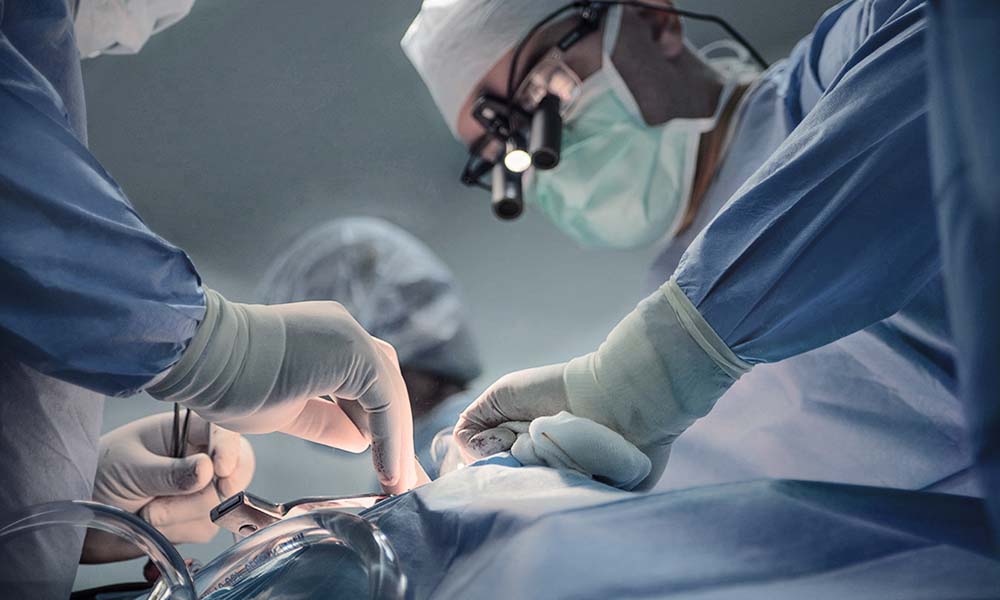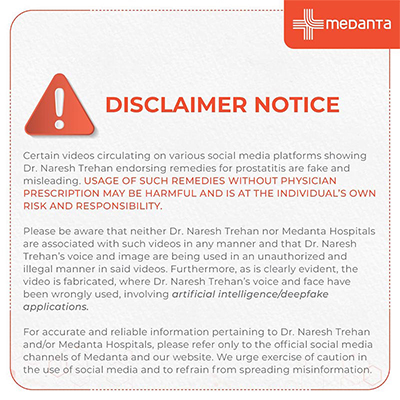Who Needs Open Heart Surgery? Warning Signs You Shouldn't Ignore
TABLE OF CONTENTS
Open heart surgery carries a mortality rate of 2% to 3%, making it crucial to understand who needs this life-saving procedure. Traditional heart surgery, particularly coronary artery bypass grafting (CABG), remains the most common type performed on adults.
However, not all heart conditions require surgical intervention. Many patients can manage their conditions through medication and lifestyle changes. Doctors recommend open heart surgery only for specific conditions such as severe coronary artery disease, heart valve problems, congenital defects, or advanced heart failure.
This comprehensive guide explains the warning signs that indicate the need for heart surgery, helping readers recognise when to seek medical attention. Understanding these crucial indicators can make the difference between timely intervention and delayed treatment, particularly for those with blocked coronary arteries or deteriorating heart function.
Open Heart Surgery: When Is It the Only Option?
Surgeons recommend open heart surgery as a primary treatment option for severe heart conditions that cannot be managed through medication or less invasive procedures.
The procedure becomes necessary for patients with blocked coronary arteries, where fatty plaque buildup severely restricts blood flow to the heart. Surgeons perform open heart operations to repair or replace malfunctioning heart valves, fix abnormal heart areas, and place cardiac implants.
Direct access to the heart & surrounding blood vessels is essential for certain heart conditions. Though minimally invasive alternatives exist, traditional open heart surgery remains the standard approach because it provides surgeons with clear visualisation and access to the heart.
Before proceeding with surgery, doctors conduct a thorough evaluation of the patient's medical history. This assessment helps identify potential complications, especially in cases involving pre-existing conditions. Furthermore, patients can improve their recovery prospects through pre-surgery preparation, including physical activity, weight management, and smoking cessation.
Though open heart surgery carries risks like bleeding, infection, and blood clots, it remains a reliable and potentially life-saving operation for those with severe heart conditions. The long-term outlook depends largely on the patient's overall health and the specific procedure performed.
Heart Conditions That May Require Surgery
 Several heart conditions might necessitate open heart surgery. These include:
Several heart conditions might necessitate open heart surgery. These include:
Coronary artery disease (CAD): CAD occurs when blood vessels supplying oxygen to the cardiac muscle become narrow and hard. This hardening occurs as fatty material forms plaque on coronary artery walls, making blood flow difficult.
Aortic aneurysms: These balloon-like bulges in the aorta develop from weakened arterial walls under constant blood pressure.
Heart valve problems: While some cases of mitral stenosis respond to catheter-based treatments, most valve-related issues require either repair or replacement surgery.
Arrhythmias: If medications prove ineffective, problems with heart rhythm might require surgical intervention. For atrial fibrillation, surgeons perform maze procedures to correct faulty electrical signals causing irregular heartbeats.
Heart failure: Surgical intervention becomes necessary when the heart fails to pump sufficient blood for bodily needs, and conventional treatments show limited success. The specific surgical approach varies based on the underlying cause of heart failure.
Common symptoms indicating a potential need for surgery include:
Persistent chest pain
Irregular heart rhythms
Chronic fatigue
Swelling in hands or feet
Breathing difficulties
Recurring indigestion
Warning Signs: Symptoms that Shouldn't be Ignored
Heart disease often develops silently, but certain symptoms signal urgent attention. These include:
Shortness of Breath, even at rest
Chest pain or discomfort, especially during activity
Pain or discomfort in one or both arms, particularly the left
Discomfort radiating to the neck, jaw, teeth, or back, especially on the left side
Unexplained excessive sweating
Unusual fatigue, dizziness, or fainting
Irregular heartbeat or palpitations
Swelling in the legs, feet, or abdomen
Nausea or vomiting
How Doctors Determine If You Need Surgery
Doctors follow a systematic approach to determine whether a patient needs open heart surgery. The decision involves thorough evaluations, diagnostic tests, and careful consideration of various health factors.
Initially, cardiologists conduct comprehensive medical evaluations, examining symptoms and reviewing personal and family medical histories. Blood tests assess cholesterol levels and other vital markers that indicate heart health. Subsequently, diagnostic imaging provides detailed insights into heart function and potential problems.
Before surgery, doctors perform several crucial tests:
Carotid ultrasound to check for arterial blockages that might increase stroke risk
Vein mapping to create detailed images of leg veins for bypass procedures
Cardiac catheterisation to examine heart valves and chambers
Chest imaging helps surgeons plan the procedure effectively
Physical condition plays a significant role in determining surgical candidacy. Doctors assess whether patients can withstand the procedure and maintain positive outcomes afterwards.
The decision-making process also considers alternative treatment options. Accordingly, doctors might recommend minimally invasive procedures based on factors like heart condition severity and overall health status.
Medical teams also evaluate specific health indicators that might affect surgical outcomes. These evaluations help determine whether traditional open heart surgery, off-pump procedures, or minimally invasive techniques would be most appropriate.
Different Types of Open Heart Surgery
Surgical techniques for open heart procedures have evolved significantly, offering various approaches tailored to specific cardiac conditions. Two primary methods exist for performing these operations: on-pump and off-pump surgery.
On-pump surgery employs a heart-lung bypass machine that temporarily manages blood circulation, allowing surgeons to operate on a still heart. Conversely, off-pump surgery, often called beating heart surgery, proceeds while the heart continues functioning, though this approach suits only coronary artery bypass grafting (CABG) procedures.
Coronary artery bypass grafting stands as the most frequently performed adult heart surgery. This procedure creates new pathways for blood flow by using healthy blood vessels from elsewhere in the body to bypass blocked coronary arteries.
Heart valve operations form another crucial category, where surgeons repair damaged valves or replace them with artificial alternatives. These replacements might use mechanical valves or biological options crafted from pig, cow, or human heart tissue.
Other specialised procedures include:
Aneurysm repair surgery - addresses weakened sections of arteries or heart walls using patches or grafts
Septal myectomy - removes portions of thickened heart muscle walls, which is particularly beneficial for hypertrophic cardiomyopathy patients.
Left ventricular assist device placement - implements mechanical pumps supporting heart function.
Maze procedure - redirects electrical signals along specific paths to restore normal rhythm in irregular heart rhythm conditions.
Heart transplantation - replaces severely diseased hearts with healthy donor organs.
Recent advancements have introduced minimally invasive alternatives to traditional open-heart surgery, particularly transcatheter structural heart procedures.
Surgery Risks, Recovery & Post Open Heart Surgery Care
Like any major operation, open heart surgery involves careful consideration of risks and recovery processes.
Potential risks include:
Allergic reactions to anaesthesia
Irregular heartbeat
Bleeding
Damage to surrounding blood vessels
Infections
Blood clots
Stroke
Recovery typically spans 6 to 12 weeks, depending on the type of surgery and individual health factors. Throughout this period, patients receive comprehensive care from a dedicated team of doctors, including surgeons, nurses, physical therapists, and social workers.
The initial recovery phase begins in the intensive care unit (ICU). Upon waking, patients might experience:
Sleepiness, thirst, or cold sensations
Temporary confusion and disorientation
Breathing tube discomfort
Chest tube drainage
Multiple monitoring devices attached to their body
Once stable, patients move to a regular hospital room, typically staying 3 to 4 days. Pain management remains crucial throughout recovery, with doctors prescribing appropriate medications based on individual needs.
Physical healing involves the gradual resumption of activities. Patients should avoid driving for approximately 4 weeks after surgery. Light exercise, primarily walking, helps improve heart and lung function.
Emotional recovery forms an equally important aspect. Many patients experience mood swings, anxiety, or depression for up to three months post-surgery. These feelings typically resolve as physical strength returns.
After discharge, daily self-monitoring becomes essential. Patients must check their pulse regularly and watch for warning signs such as fever above 101 degrees, chest pain unrelated to incisions, or unusual swelling. Weight monitoring helps detect fluid retention, with gains exceeding 2-3 pounds in one day requiring medical attention.
Proper nutrition significantly aids recovery. A diet rich in protein yet low in fat, cholesterol, and sodium supports healing. Foods like fish, eggs, dairy, beans, and nuts provide essential nutrients.
Conclusion
Open heart surgery stands as a crucial medical intervention that saves countless lives each year. Though doctors recommend this procedure only when absolutely necessary, understanding its warning signs helps patients seek timely medical attention.
Doctors carefully evaluate each case through comprehensive tests and assessments before recommending surgery. This thorough approach ensures patients receive the most appropriate treatment for their specific heart condition, whether through traditional open-heart surgery or alternative procedures.
Following surgery, most people return to their normal activities within three months, though complete healing might take longer. Regular check-ups, proper medication, and lifestyle changes are vital for long-term recovery success.
Patients should remember that early detection of heart problems leads to better outcomes. Anyone experiencing persistent chest pain, breathing difficulties, or unusual fatigue should speak with their doctor immediately. These symptoms might indicate serious heart conditions that require medical attention.
FAQs
How long does open heart surgery take?
The average operation lasts three to four hours in the operating theatre. Family members should expect additional time for pre-surgery preparation and post-surgery stabilisation.
What alternatives exist to traditional open heart surgery?
Modern medicine offers several less invasive options:
Catheter-based procedures like transcatheter aortic valve replacement
Video-assisted thoracic surgery using small incisions
Robotically assisted surgery for heart valve problems and cardiac tumours
When can normal activities resume?
Driving typically resumes after the first post-surgery consultation with the surgeon. Regarding weight lifting, patients must avoid lifting anything over five pounds until cleared by their physician.
What warning signs require immediate medical attention?
Contact doctors immediately for:
Chest pain unrelated to incision discomfort
Fever
Nausea and vomiting
Breathing difficulties
Signs of surgical site infection
Slurred speech
What preparation is needed before surgery?
Patients might need to:
Stop certain medications like blood thinners
Use special antibacterial soap the day before
Avoid food and drink after midnight
Inform doctors about all current medications, including supplements






